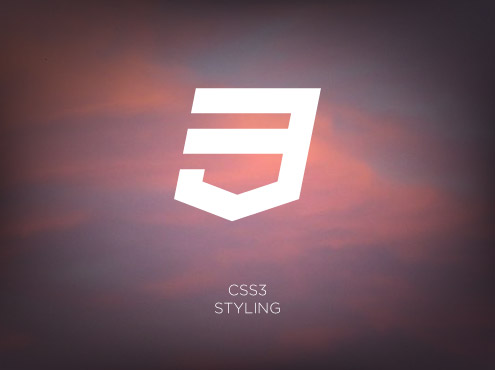-
201128 Feb
Over the course of the last two weeks, the W3C CSS Working Group have issued three updated CSS3 specifications. The first sees the CSS3 Backgrounds and Borders module return to candidate recommendation, with the second and third providing updated working drafts of the CSS3 Text and CSS3 Image Values and Replaced Content modules respectively.
The working group also introduced a new module, CSS3 Writing Modes, just over 2 weeks ago on the 1st February. This recent flurry of activity represents the first major updates to the CSS3 specifications since the CSS3 Color module was released as a proposed recommendation in October last year.
Let’s take a look at what’s new.
-
201131 Jan

The new CSS3 icon, part of the HTML5 brand (image courtesy of W3C).
On the 18th January the W3C unveiled a logo and brand identity for HTML5 and associated technologies.
The HTML5 logo and accompanying icons (shown below), including one for CSS3 (larger version above), are, according to the W3C at the time of launch, intended to be “an all-purpose banner for HTML5, CSS, SVG, WOFF, and other technologies that constitute an open web platform. The logo does not have a specific meaning; it is not meant to imply conformance or validity, for example. The logo represents ‘the Web platform’ in a very general sense.”
-
201017 Nov
Posted in Book Reviews, CSS3 Resources, News

CSS3 for Web Designers, released yesterday, is the second instalment in A Book Apart’s For Web Designers series of mini books for, unsurprisingly, web designers.
The book, available both as an ebook (now) and a paperback (from 22nd Nov), aims to show designers those aspects of CSS3 which can be comfortably used today, along with workarounds for older browsers which don’t support CSS3 (e.g. Internet Explorer 6.0 through 8.0).
-
201029 Oct
The latest Internet Explorer 9 Platform Preview (build 6) released yesterday at Microsoft’s professional developers conferences adds further support for CSS3, specifically CSS3 2D Transforms.
-
201007 Oct
The W3C have this week released an updated working draft of the CSS3 Text module. Major changes from the previous working draft, released in March 2007, include:
-
201013 Sep
The CSS Working Group met in Oslo last month for three days of face to face meetings.
The minutes, available on the CSS Working Group’s blog, reveal discussions around CSS2.1, several CSS3 modules, a rough draft of the Working Group’s priorities for 2010 and even taking Microsoft to task over their controversial test results published earlier this year.
-
201025 Aug
CSS3 Rocksby Chris
Posted in CSS3 Previews, CSS3 Resources, News
Google have recently updated their HTML5ROCKS site, originally launched in June this year, with numerous new demos and tutorials for HTML5 and CSS3. The latest update adds, amongst other articles, a tutorial for CSS3 Web Fonts (with @font-face) and a new ‘HTML5 Studio’ – offering a number of live demos for many of the new possibilities offered by HTML5 and CSS3.
Since being updated the site has been causing quite a stir online and if you’ve not come across the site before, it’s an excellent resource for getting to grips with HTML5 & CSS3 and certainly worth a visit.
-
201011 Aug
Posted in CSS3 Previews, Site Updates
The border-radius page in our CSS3 Preview section has been updated to reflect the latest version of the Backgrounds & Borders specification and the latest browser support.
The page now offers a more comprehensive and easy to follow guide/tutorial, including cross-browser examples, which should enable any designer (whether novice or expert) to get to grips with border-radius in a matter of minutes.
-
201009 Aug
The CSS Working Group published an updated Candidate Recommendation of the Media Queries module on the 27th July.
-
201001 Aug
Mozilla announced the arrival of Firefox 4 Beta 2 late last week, only three weeks after the release of Beta 1. This updated release includes two major improvements over the first beta release, notably increased performance and increased support for CSS3 Transitions.
You can download the latest release here.